The Live Design Practice is a new initiative which will give students at different levels and from all courses across the school the opportunity to take part in live projects, but also provide basis for research into innovation in practice. It is a neutral space where we can bring together people from planning, architecture, interiors, architectural technology, transport and tourism to work together. The initial project is a QHT-funded mean-while Live Community Hub in Leyton, in partnership with Waltham Forest Council, local youth organisation MVP Media, and the local community.
Students gain direct, hands-on experience of the planning and construction process, both enhancing and broadening their range of skills, and developing their confidence through dealing with stakeholders and construction professionals. The project aims to be a beacon of community engagement inspiring children and young people. In addition, local outreach exhibitions organised by Wilfred Achille, Part III course leader at the University of Westminster, promotes architectural education from and for black and ethnic minority parts of the community, engaging the people who usually would not have access to academic environments.
Live projects involve participator y activities that can bring together diverse stakeholders. Significantly, the projects have a tangible physical aspect which makes participation exciting, engaging and, most importantly, empowering. Our innovative approach is to use Live Projects as a way to understand issues and ask questions. We introduce new ways of working collaboratively across sectors and take our multidisciplinary skills within academia and use these in live projects to serve communities and have a positive impact on society whilst introducing students and staff to alternative practice.
This project derives from the previous 1:1 pavilions students built. Students engaged in public consultation in collaboration with the council to better understand the needs and aspirations of locals. They then developed designs for a visionary community hub based on this initial research, to create a place that supports activities for young people in the area as well as offering the university a space to exhibit work on a continuous basis, reaching out to the local community.
Live projects provide a deeper understanding of the complex relationships between spatial, political, financial and social factors in connection with our lived urban experience. There is the possibility for practical and tangible outcomes, which can be communicated to a wide range of audiences in an engaging way.
Maria Kramer (Project Lead)
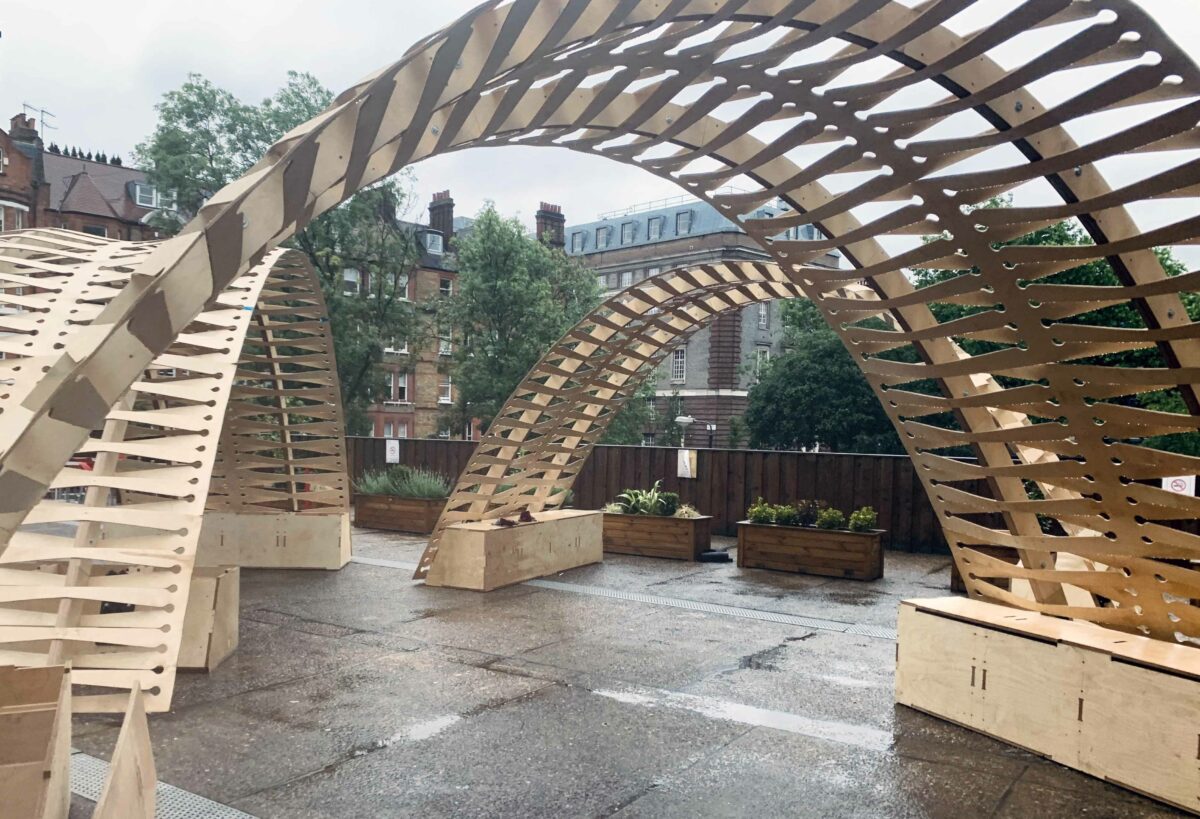
Maria Kramer: “Woven Pavilion at Marylebone Campus”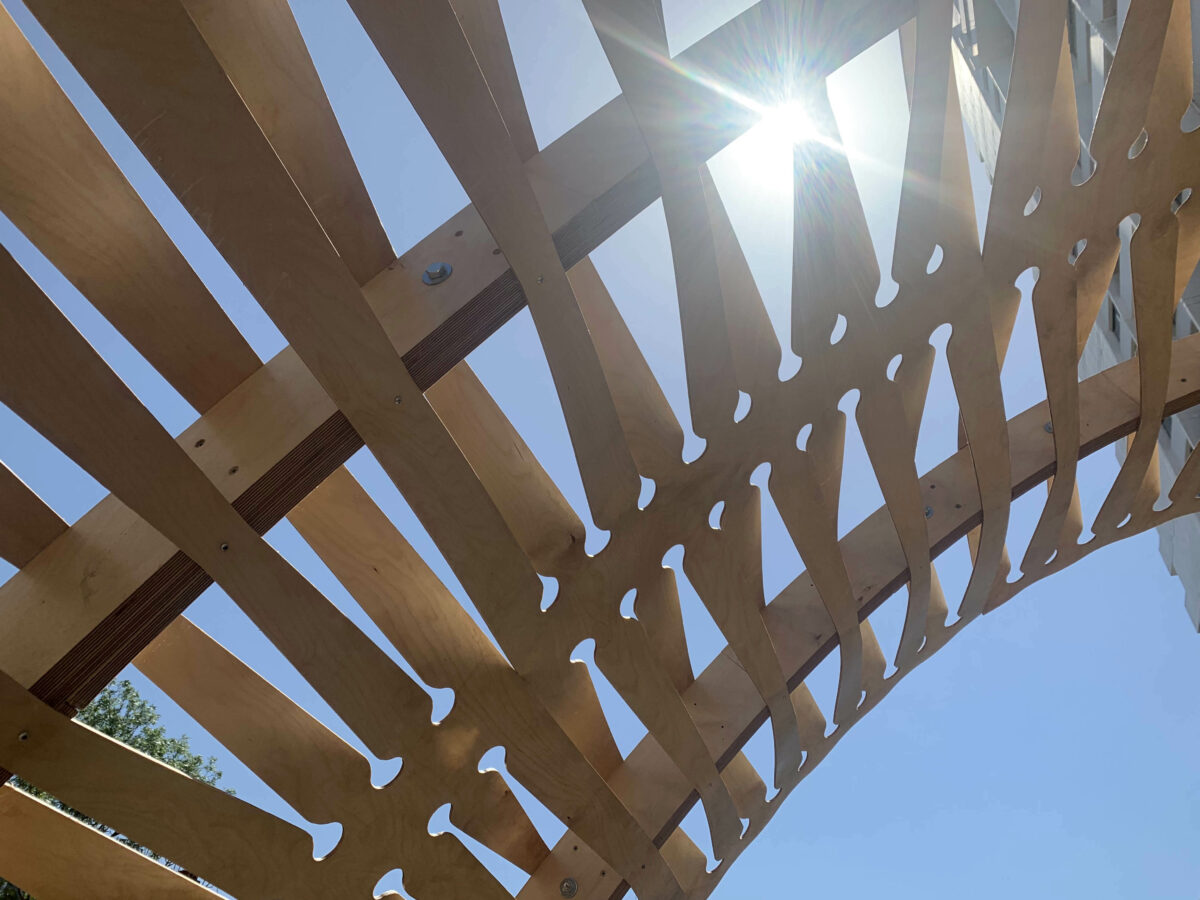
Maria Kramer: “Woven Pavilion at Marylebone Campus” 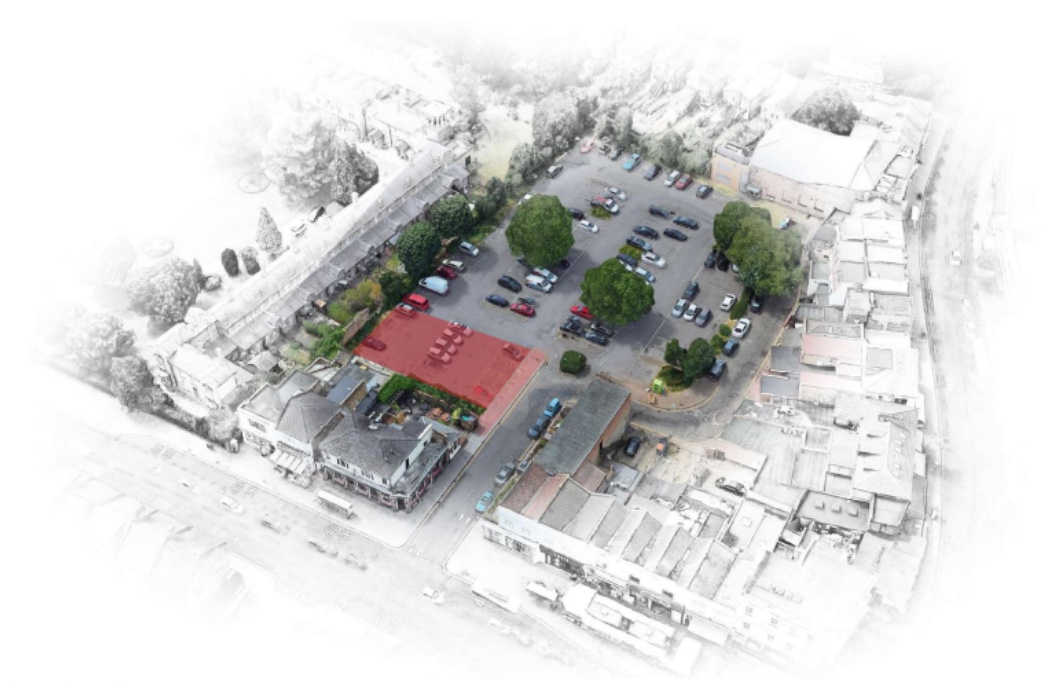
Jason Jones: “Axonometry of the site”
Maria Kramer: “Site visit with students from DS(3)2” 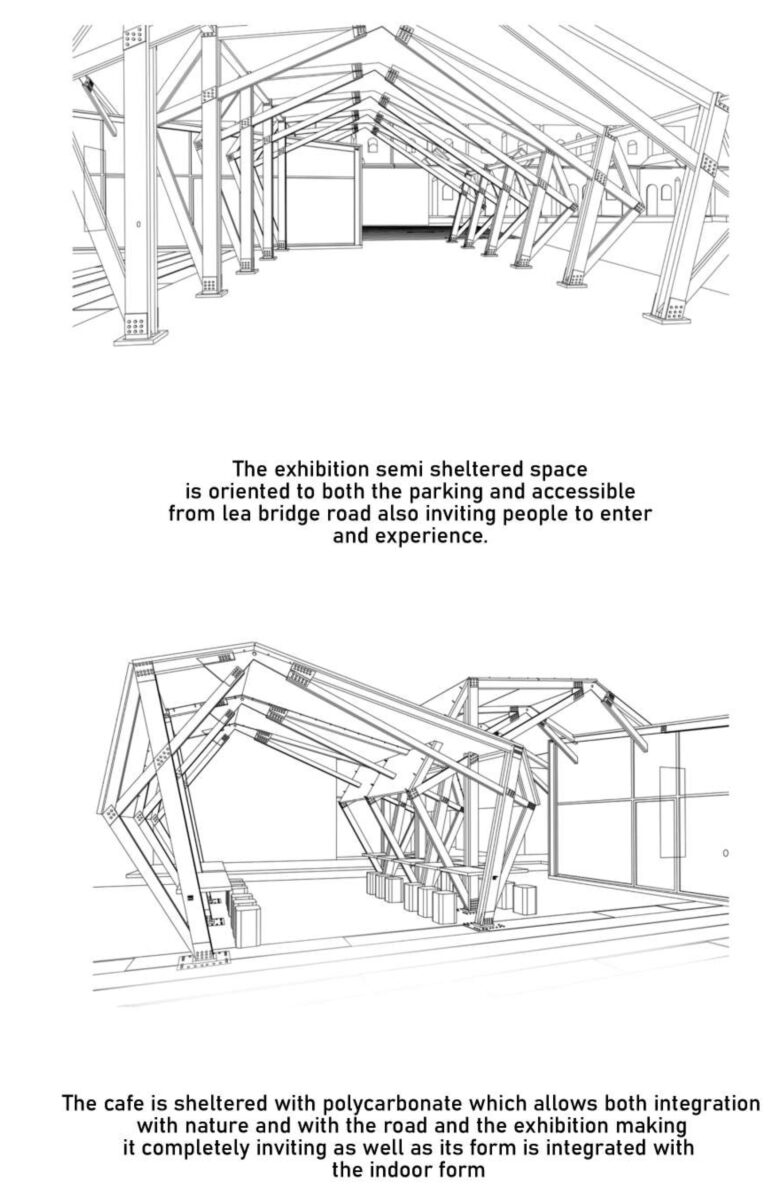
Saima Roof: “3D structural sketch model”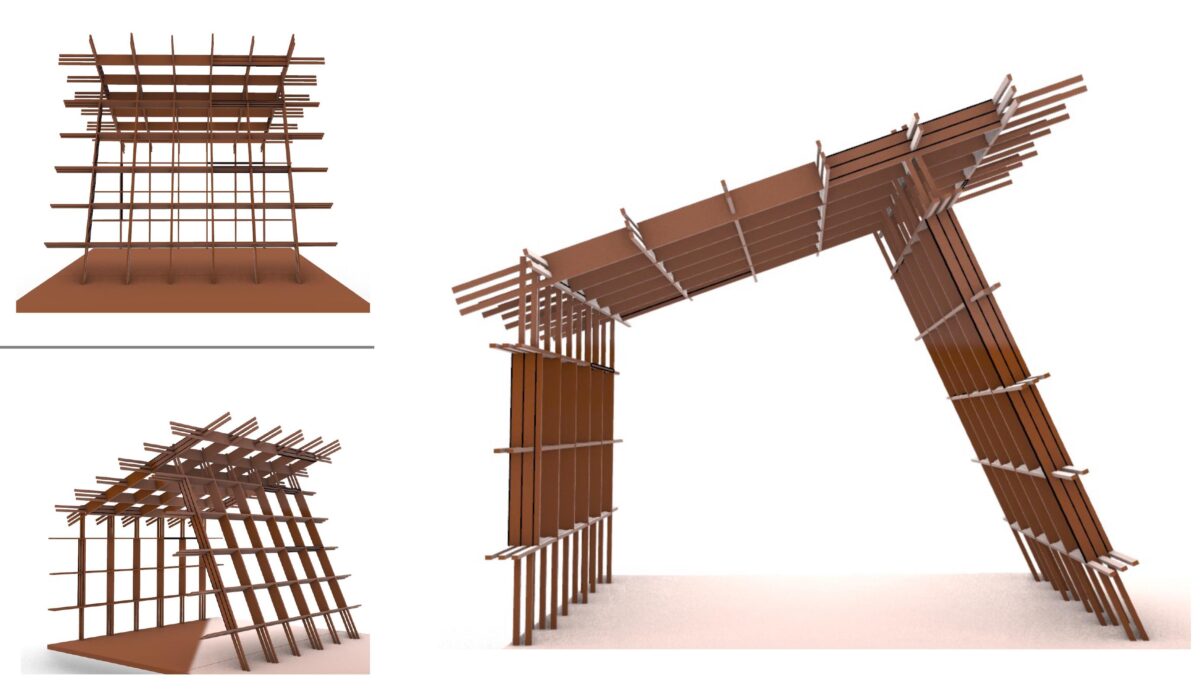
Juwana Noori: “Student proposal of structure”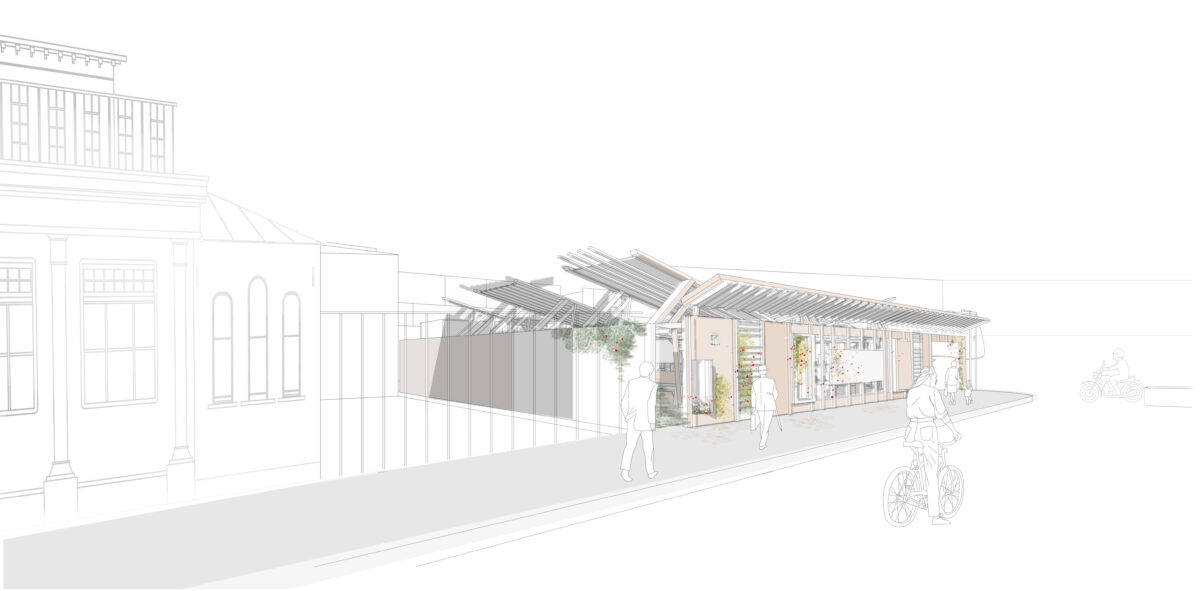
Atefeh Arefcheh: “View from High Street, student proposal”









